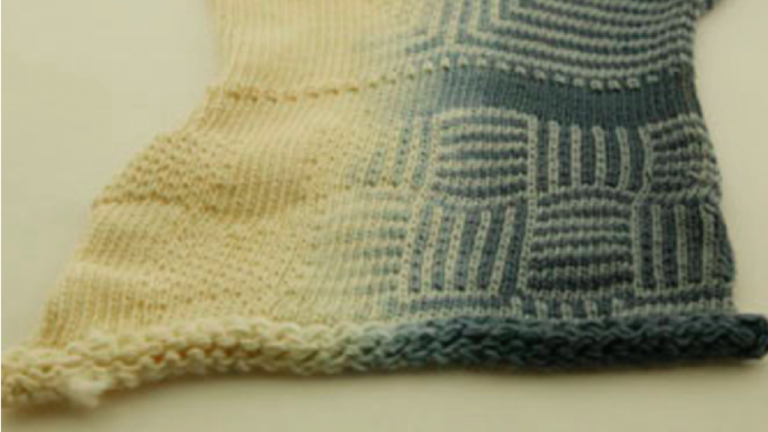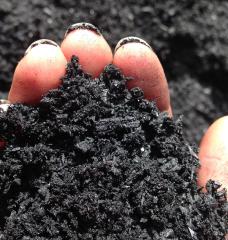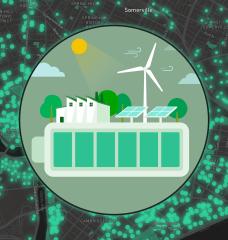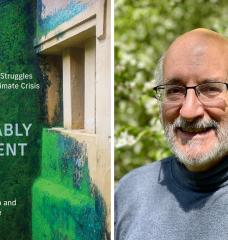
Lynda Grose is a pioneer in sustainable fashion. After co-founding Espirit’s ecollection line, she went on to consult brands including Patagonia, Gap, and Levi Strauss and Co. She’s also collaborated with the U.S. Department of Agriculture on The Sustainable Cotton Project, and currently is the chair of fashion design at California College of the Arts.
We sat down with Lynda to discuss sustainability issues within the fashion industry, fashion’s immaterial aspects, and how to transition into socially and environmentally conscious production models. If you’re interested in Lynda’s work, check out The Sustainable Cotton Project, or her piece “Fashion Isn’t the Problem: The Industry Needs to Change”.
Mikaela: Tell us a little bit about you and your background.
Lynda: I am a fashion designer by training. I went to Kingston University in the UK and have a BA Honors in Fashion Design. I worked in UK and NY fashion industries before moving to San Francisco when I was recruited by the clothing company ESPRIT in 1988; that's where I was exposed to sustainability issues.
The owner, Doug Tompkins and his dear friend Yvon Chouinard (of Patagonia) were great outdoors people and saw the environment degraded by increased use. They were early adopters of bringing sustainability into business and using their companies as examples of change.
ESPRIT supported the 'eco-audit guide' developed by the Elmwood Institute, founded by Fritjof Capra and Ernest Callenbach, and we implemented an eco-audit of the company in 1990.
It was working in this environment that prompted me to apply the eco-audit to clothing development. This research and development became known as a line of clothing called “ESPRIT Ecollection” launched in 1992. It framed an approach to fashion and sustainability that became adopted industry wide, and set a new trajectory for my career.
Mikaela: What are the biggest sustainability issues regarding textiles?
Lynda: Different fibers have different impacts at different parts of their lifecycle. Polyester, for example, is derived from a non-renewable resource (oil) and is non-biodegradable. The best design strategy response to these issues is to have polyester be a closed loop material cycle… ie, used recycled and recyclable polyester. There are two ways to recycle polyester. One is mechanical: Taking a garment, shredding it, and melting it down to a liquid form that can be extruded into new fiber. This represents about 10% of global polyester production. The second is chemically: This process works at the molecular level to break down the polymer and then re-polymerize it into a new fiber. In this method, there is no degradation of the fiber and there is the potential to recycle 'in perpetuity'. This method, however, represents less than 1% of global polyester production. If we were truly taking sustainability seriously, all 'fast fashion' companies would be using closed-loop recyclable polyester and supporting the infrastructure to enable it to happen industry-wide.

Another example is hemp, which people promote as an alternative to cotton as it uses less water in its cultivation. However, hemp requires chlorine bleach to allow hemp to be dyed in light and bright colors. There are balances and tradeoffs for all fibers. Wool is considered a responsible fiber by some. We tend to take care of wool items. We wash wool less in part because it tends not to harbor smells, and naturally resists staining. But if too many sheep are herded on the land, soil becomes compacted and degraded. Organic wool standards restrict the number of sheep per acre, to assure the health of the land and soil.
At ESPRIT, cotton was a huge part of our business - about 90%. And in the early 90’s it was 60% of global textile production. So it made sense for the ESPRIT ecollection to address cotton specifically. We supported the first organic cotton conferences in California and ecollection included organic cotton knits.
Mikaela: Can you tell us about the Cleaner Cotton™ project, and the distinction from organic cotton?
Lynda: The Sustainable Cotton Project started in 1996, and its aim was to educate brands on the impacts of conventional cotton and the benefits of organic. In the late 90’s, when we witnessed cotton production moving overseas, we couldn’t compete with labor costs in developing nations. So one of our farmers suggested we explain and market what we were doing to help farmers transition to biological systems of cultivation.

Many of our farmers were adopting better practices en route to becoming organic. We called this “cleaner cotton”. Cleaner Cotton™ disallows the use of the top 11 most toxic chemicals. We work with UC Agricultural Extension scientists to implement IPM practices, and we monitor the farmer’s use of chemicals. If farmers have an infestation, we advise them on biological alternatives and monitor the pest populations present in the field.
Cleaner Cotton reduces chemical use between 50-73% in comparison with other farmers in the same region. We know this because, in California, farmers are required to document their chemical usage on all crops. The county commissioners enforce this legal requirement county by county, and California EPA crunches the data. The cleaner cotton program is therefore transparent, documentable and traceable. There is no organic in California at the moment. There isn't a business case for it; it’s too expensive.
Mikaela: In your piece "Fashion isn't the Problem: The Industry Needs to Change" you state: "many environmentalists would advocate doing away with fashion altogether. Yet this strategy is prompted by a focus on the negative impacts of materials and processing of fashion garments and fails to acknowledge fashion's positive immaterial aspects." Can you elaborate on this?
Lynda: Fashion existed long before commerce did, and satisfies deep human needs; a sense of self and sense of belonging or differentiating oneself from a group. And none of this is considered or acknowledged by environmentalists. At its root fashion is not unsustainable. Rather, it's our current way of pursuing commerce, which is unsustainable.
The growth business model and speed of 'conspicuous production' outpaces the ability of natural systems to provide raw materials and carry away and process waste into a benign form. Conspicuous production now even outpaces the ability of people to buy more stuff, resulting in enormous amounts of waste pre and post retail.

Fashion is usually dismissed as frivolous because they are looking at the impacts in the supply chain and the industrial model of pushing more unit out to the customer. Sustainability isn't just about looking at material impacts. It’s also about keeping materials cycling, in the 'shared' (or resale) economy, and harnessing the emotional content of garments. Why do people keep garments for a long time? Why do they choose not to wash them? Do they wear them in a way that’s unintended? Do they want garments passed down from grandma or have they passed something onto their daughter? There are all kinds of emotional connections with clothing that industry is not noticing because they are trapped in a business model that is intent on selling more.
Fashion is much more than shopping and much more than the binary production and consumption model that industry and commerce present.
Mikaela: How do fashion and clothing fit into the bigger picture regarding sustainability and climate change?
Lynda: Fibers, textile processing, and clothing all take energy to produce. Carbon emissions occur at all stages of the lifecycle of the product and can be reduced through many strategies. From using already produced fibers (recycling) to choosing low temperature-based and low water-use dyes, developing new business models that resell products several times over to gain revenue.
Pushing products out to the consumer, and then pouring advertising dollars into selling everything produced is an old model. A lot of garments produced don't even reach the retail store, and when they do get to retail and don't sell, you have post retail waste. This enormous amount of waste has nothing to do with supply chain and has everything to do with the business model being dependent upon selling more units.

VIGGA is a Danish subscription service for baby clothing. When you become a member you receive a package of clothing and when the baby grows out of them, you send the garments back, and they become part of a package that goes out to someone else. The garments are washed and combined with other new garments in the package, so the customer always has a combination of old/reused and new items. With this model, it’s not about the number of units you can sell, but the number of times one unit goes out and back again to as many people as possible over its useful life. The founder of VIGGA notes she can sell or rent out these garments around 5-7 times. This slows the flow of materials through the fashion system, while delivering delight to the customer and generating revenue for the business.
The real nut and root of unsustainability is the current business model. The emphasis on making more material units and getting it to the market at faster speeds and greater volumes is what degrades the environment, degrades people, degrades communities, and even degrades the creative process.
Mikaela: What are some creative endeavors that respect fashion’s immaterial aspects as well as the environment?
Lynda: The accepted method nowadays is to look back through the supply chain to identify the impact of a particular garment. And then you educate the customer about the difference because you want them to choose with their pocket book.
I am working with colleagues at Parsons and Kolding School of Design to develop garments that can evolve over time. How a shirt, for example, can be designed to be partially disassembled to go through a digital printer, several times, so over time it becomes more visually more complex. We are looking at what kind of construction we need to enable that, and then testing it. The idea is to provide a service where a garment comes back not just for reuse but transformation, several times before it is finally discarded and recycled.
I’m also working on a series of knits using cationic and non-cationic yarns, where the sweater has one pattern when its bought and reveals a different pattern when over-dyed. Studies show that people buy new clothing because they want to feel refreshed. But can we satisfy their desire to feel refreshed in different ways than buying more material units? I think we can. This is not anti-business, it’s challenging the current logic that business, including the fashion business, operates under.
These new models of business have the potential to reduce carbon emissions radically vs. incrementally.






